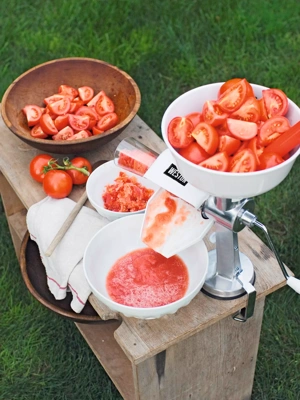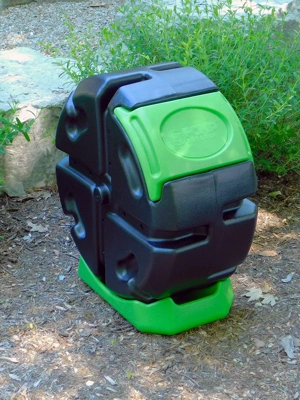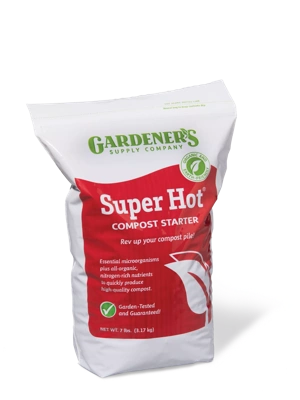Make Your Own Hot Sauce
Bottle a heat wave for giving or storing

The wide world of hot sauces is daunting, especially for those of us who are wary of spicy-hot peppers. Will this one be mild, medium or blistering? Is the sauce fruity, sweet, smoky or acidic? Making your own hot sauce is the best way to get the heat level and flavors you crave.

With the Deluxe Hot Sauce Kit, you can make six different hot sauces.
Using the recipes below, you can make your own sauce from scratch. Or you can use one of our hot sauce kits. They contain everything you need to craft bottles of of spicy goodness, including spices, vinegar and bottling supplies, plus our exclusive pepper purees.
Because I have a low tolerance for spicy sauces, I tasted a small amount of dried chiles to get a sense of the flavors. Here's what I found:
- New Mexico pepper powder: very mild with no burn
- Ancho powder: mild, light sweat, no burn
- Curry powder: some heat, complex flavor
- Cayenne powder: hot with a long burn
- Chipotle pepper: smoky flavor with mild heat
- Guajillo pepper: sweetish with no heat
- Arbol pepper: some heat when dried, more heat when added to liquid
Important: When handling hot peppers, wear the plastic gloves. Wash your hands and utensils with warm soapy water and don't touch your face, eyes or other sensitive areas. When chopping dried peppers in the blender, do not breathe in the dust or fumes.

Bottled hot sauce, made with the Deluxe Hot Sauce Kit
Recipes
If you don't have a kit, try some of these recipes. Most have little heat, except where noted. If you like it hot, adjust the ingredients to suit your taste.
To make the first three recipes, I started with a "base sauce" of guajillo pepper. Building on the base sauce, I added other ingredients to create Sweet Heat Hot Sauce, Caribbean Hot Sauce and Garden Hot Sauce.
Guajillo Pepper Base Sauce
- 2 dried guajillo peppers, sliced into thin strips
- 1-1/2 cups boiling water
- 1/3 cup chopped onion
- 1 tablespoon roasted garlic
- 6 tablespoons canned tomato sauce
Place pepper strips and their seeds in a dry blender. Blend until finely chopped or powdered. Add the boiling water, onion, roasted garlic and tomato sauce and blend until smooth, scraping down the sides with a spatula.
Makes 2-1/4 cups.
Sweet Heat Hot Sauce
This mixture is mild when freshly made, with no real heat. For more spice, add more fresh garlic and double the curry powder. Adjust to taste. For a sweeter sauce, add more brown sugar.
- 3/4 cup Guajillo Pepper Base Sauce
- 1/4 cup apple cider vinegar
- 1/4 teaspoon chili New Mexico powder
- 1/4 teaspoon ancho powder
- 1/4 teaspoon curry powder
- 3/4 teaspoon brown sugar
- 1/8 teaspoon salt
Combine all ingredients in a blender and process until smooth.
Makes 7 ounces.
Caribbean Hot Sauce
This sauce is mild, with a light smoky, fruity flavor. To increase the depth of flavor, double the amount of fruit and chipotle. To make the sauce hotter, add more cayenne.
If you don't have chipotle powder, you can make your own. Cut a piece from one of the dried chipotles and finely chop it before adding it to the blender.
- 3/4 cup Guajillo Pepper Base Sauce
- 1/4 cup apple cider vinegar
- 1/4 teaspoon cayenne powder
- 1/4 teaspoon chipotle powder
- 1/4 teaspoon curry powder
- 3/4 teaspoon brown sugar
- 1/4 teaspoon salt
- 1 tablespoon mango puree
- 1 tablespoon pineapple chunks
In a blender, combine all of the ingredients. Blend until smooth.
Makes 8 ounces.

Garden Hot Sauce
This recipe is very mild. For a spicier sauce, add 1/4 teaspoon or more of cayenne or curry powder.
- 3/4 cup Guajillo Pepper Base Sauce
- 2 tablespoons freshly squeezed lemon juice
- 2 tablespoons apple cider vinegar
- 1/4 cup fresh cilantro leaves, lightly packed
- 1/4 cup chopped carrot
- 1 large clove fresh garlic, peeled
- 1 tablespoon chopped onion
- 1/4 teaspoon salt
In a blender, combine all ingredients and process until the vegetables are pureed. The final color is caramel brown, and the flavor is earthy and mellow.
Makes 8 ounces.
Chipotle Hot Sauce
This smoky, rich sauce is lip-burning hot. To reduce the heat, start with two chipotle peppers. Excellent in BBQ sauce and marinade.
- 4 chipotle peppers, sliced into thin strips
- 2/3 cup boiling water
- 2 tablespoons freshly squeezed lemon juice
- 2 tablespoons white vinegar
- 3 tablespoons canned tomato sauce
- 3 tablespoons chopped onion
- 2 to 3 large cloves fresh garlic, peeled
- 3/4 teaspoon brown sugar
- 1/4 teaspoon ancho powder
Place pepper strips and seeds in a dry blender. Blend until finely ground or powdered. Add the boiling water, blend and let rest for 10 minutes or so to rehydrate. Add the remaining ingredients and blend until smooth.
Makes 10 ounces.
Louisiana-Style Hot Sauce
The sauce has a medium-hot flavor with a burn that sneaks up on you. For even more heat, add another arbol pepper or more cayenne powder.
- 3 arbol peppers, sliced into thin strips
- 1/2 cup boiling water
- 2 tablespoons canned tomato sauce
- 2 tablespoons white vinegar
- 3 tablespoons chopped onion
- 1 large clove fresh garlic, peeled
- 1/4 teaspoon cayenne powder
- 1/4 teaspoon salt
Place pepper strips and their seeds in a dry blender. Blend until finely chopped or powdered. Add the boiling water, blend and let rest for 10 minutes or so to rehydrate. Add the remaining ingredients and blend until smooth.
Makes 7 ounces.
Garlic Hot Sauce
The sauce has a medium heat that is not overpowering. Lemon and tomato juices mellow the strong garlic flavor. Add another arbol pepper for more heat or more ancho powder for earthy flavor.
- 3 arbol peppers, sliced into thin strips
- 1/2 cup boiling water
- 3 tablespoons canned tomato sauce
- 2 tablespoons cider vinegar
- 2-1/2 tablespoons freshly squeezed lemon juice
- 3 tablespoons chopped onion
- 4 to 6 large cloves fresh garlic, peeled
- 1/4 teaspoon ancho powder
- 1/4 teaspoon salt
Place pepper strips and their seeds in a dry blender. Blend until finely chopped or powdered. Add the boiling water, blend and let rest for 10 minutes or so to rehydrate. Add the remaining ingredients and blend until smooth.
Makes 10 ounces.
Hot Enough for You?
HOT peppers (or chile peppers) belong to the same family as tomatoes, eggplants and potatoes. Peppers come from several species of the capsicum genus, but all share the heat-producing chemical, capsaicin. Capsaicin triggers the body's pain receptors and endorphin release, a chemical that helps combat the feeling of pain and can produce feelings of euphoria. Capsaicin also has pain-relieving medical properties and is widely used in herbal medicine.
The "heat" or concentration of capsaicin in a pepper depends on the species and variety, the climate and growing conditions under which it grew, and the water content of the pepper (dried peppers are "hotter" than fresh peppers). That's why seeds from the same pepper will yield different results from one year — or one garden — to the next. In the U.S., most chile peppers come from New Mexico, California, Arizona and Texas.
| Pepper | Scoville Units |
|---|---|
| Cayenne | 30,000-50,000 |
| Arbol | 15,000-30,000 |
| Jalape#13; and chipotle | 2,500-8,000 |
| Ancho | 1,000-2,000 |
The heat of peppers is measured in Scoville units. On this scale, the higher the number, the hotter the pepper. For example, sweet bell peppers rate a zero; Scotch Bonnet peppers blaze in at 100,000 to 325,000 Scoville units.

Ann is an avid gardener, cook and garden writer, and a Vermont Certified Horticulturist. She tends to her old farmhouse and organic homestead where she raises blueberries, raspberries, strawberries, and elderberries, as well as fruit and nut trees. Ann grows vegetables and herbs in raised beds and containers that are tucked into a lush landscape of perennial gardens in the scenic Winooski River Valley. A trained horticulturist and ecological landscape designer, she is the author of four gardening books, including Organic Gardening for Dummies, and is a longtime contributor to many magazines, websites and other publications.
Last updated: 01/04/2023
Print this Article:
Related items
Get the Dirt
Stay up to date on new articles and advice. Please fill out the information below.









